Reviews
Peter Greenaway
UK, 1980
Credits
Review by David Carter
Posted on 12 January 2010
Source Zeitgeist Video DVD
Categories Peter Greenaway, Sacha Vierny, Michael Nyman, Ben van Os and Jan Roelfs
From the start, The Falls puts the viewer immediately off guard. The film opens with a frenetically moving camera exploring a black and white landscape while a succession of ninety-two names scroll upwards. Both the names and visuals are meaningless and indecipherable to the viewer. A stern voiced narrator offers up a brief explanation but one that does little to clarify the situation: The Falls is a visual catalog, a living dictionary of loosely connected individuals and their biographies. Complicating matters, The Falls is the neither the first nor last entry in the catalog, simply the biographies of the ninety-two individuals with names beginning with FALL. We are told that those depicted in The Falls are all victims of the Violent Unknown Event (VUE) and represent only an infinitesimal portion of the nineteen million affected by the occurrence. As the title card for the first entry appears - #1 Orchard Falla - the viewer seems to know less about the film than when they began.
This disarming beginning not only gives us a glimpse of the ideas at play in The Falls, but also some of the concepts and obsessions that would frequently reappear in Greenaway’s later work as well. Mystery, lists or catalogs and games are all present in this brief introduction. The viewer’s curiosity is piqued immediately and an eagerness to delve into the mystery of the VUE appears even before one is fully sure of what exactly it may be. Mysteries of differing types are present in most of Greenaway’s films, ranging from whodunits to esoteric musings about the mystery of life, two thoughts that factor heavily in The Falls. The existence of a Directory spanning some nineteen million biographies prefigures Greenaway’s later preoccupations with cataloging, numbering and classifying, as seen in films such as A Zed & Two Noughts and Drowning by Numbers. The latter of those two films also includes an extensive system of elaborate games played by the characters. One could call what Greenaway is doing in The Falls another type of elaborate game—rather than presenting a fictional narrative, it purports to be an authentic document presenting a history of events that never truly occurred.
We aren’t left to wonder about the goals of Greenaway’s simulacrum for long, as Orchard Falla’s story begins a parade of inventive and often amusing segments. In the first of many pieces that owe no small debt to the dry and absurdist humor of Monty Python, Orchard Falla’s life is described in terms of perpetual toothaches, putting bird skulls in his shoes and disappointedly staring at distant coasts. Greenaway increasingly ups the ante on the bizarre affectations of his subjects as the film continues and, as with the introduction, we see the beginnings of several themes in this first segment. The deadpan delivery of the odd and confusing personages continues throughout the film and, again, he brings up more tantalizing details that have no explanation within the segments themselves. The chief of these is “The Theory of the Responsibility of Birds” and the beginning of The Falls’ main obsession: birds and flight.
What little we do learn about the VUE over the course of the film points strongly to an avian genesis or at least a decidedly ornithological bent. Birds and flight overwhelm The Falls and Greenaway displays an impressive and exhaustive amount of bird knowledge—species, anatomy, symbolism and mythology. The Falls’ fascination with birds and flying is an extrapolation of man’s fascination with the same, flight being a source of wonder for man for centuries and a relatively still-new ability of humanity. Flight in this regard is used to represent any unknowable or unattainable goal for man, and the victims of the VUE are sometimes presented as if they are members of a strange religious order or cult. There is a religious undertone to many of the segments and the subjects either love or hate birds, thus becoming the “devout” and the “atheists” of the film. The myth of Icarus is both mentioned by several of the subjects in reverent tones and alluded to in one of the more common effects of the VUE: the victims’ persistent dreaming about water.
The film alludes more subtly to the Icarus myth in the way in which each of the subjects in The Falls is negatively affected by the VUE. The changes vary from dramatic body transformations to the adoption of new languages, both of which prove to be handicaps to an extent. Several of the subjects remain unseen but their deformities are listed and range from minor changes to limb loss and strange growths. The new language speakers represent a different sort of limitation the social and personal separation that occurs when one can no longer communicate with their family or fellow citizens.
Change and transformation are at the heart of The Falls. The film posits a world where nearly one percent of the world’s population - roughly equaling the number of casualties in World War I - is dramatically changed forever by an event that no one fully understands. The Falls can therefore be viewed as an attempt to contextualize the unexplainable, to apply human logic to the illogical. Viewing the Standard Directory and, by extension, The Falls as this type of endeavor allows one to see why Greenaway has taken such a comedic tone in the work. The film is a satire, but one that intends to skewer the documentarians rather than their subjects. Greenaway’s goal for the film is to point out the absurdity of man’s attempt to assert control over the nature world by forcing an ill-fitting system of classification on it. Man’s desire to be able to say, “I understand this” is folly to Greenaway and to explore this in the film he has constructed a labyrinth of the inexplicable (the VUE) and the absurd (the victims).
An attempt to catalog and classify the work of a filmmaker as varied as Peter Greenaway may also seem to be folly. This strange and hilarious mockumentary at first seems out of step with the rest of his feature-length output. However, The Falls strongly points to Greenaway’s later work by showing his esteem for the mystery and wonder of life. Unanswered questions figure heavily in Greenaway’s subsequent films and the two films that follow The Falls both see characters paying for their curiosity with their lives. Greenaway’s oeuvre puts an emphasis on the fantastic in life but, unlike the makers of the Standard Directory, his goal is to capture a fleeting glimpse of it, not to contain or to dissect it. The Falls is his first attempt at reaching this goal and should be seen not as an amusing deviation from his later films but as a Rosetta Stone to understanding them.
More Peter Greenaway, Sacha Vierny, Michael Nyman, Ben van Os and Jan Roelfs
-
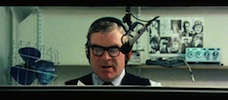
The Falls
1980 -
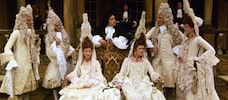
The Draughtsman’s Contract
1982 -

A Zed & Two Noughts
1985 -
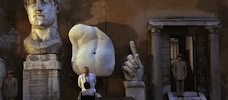
The Belly of an Architect
1987 -
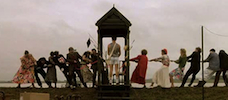
Drowning by Numbers
1988 -
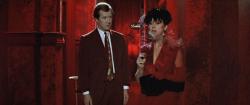
The Cook, the Thief, His Wife & Her Lover
1989 -
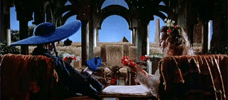
Prospero’s Books
1991 -
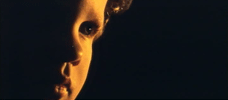
The Baby of Mâcon
1993
We don’t do comments anymore, but you may contact us here or find us on Twitter or Facebook.



